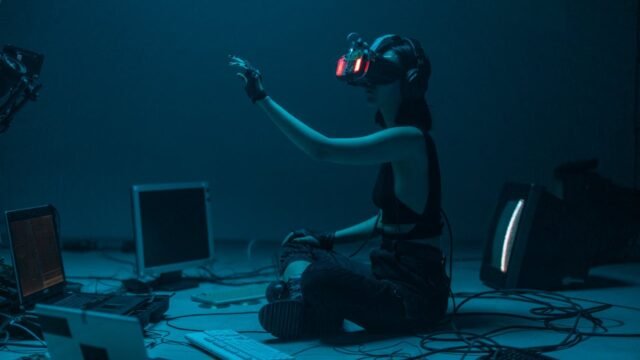Before I start the AI gist at all, let me warn that this is a very long read and you may use the table of content if you need to jump straight to a part that interests you. That said, What is AI.
Artificial Intelligence, or AI, has been the buzzword of the decade, and unless you’ve been living under a rock (or stuck watching reruns of Friends), you’ve probably seen its impact everywhere. But what exactly is AI? Imagine a brainy robot that never needs coffee breaks, tirelessly learning, analyzing, and solving problems to make our lives easier. That’s AI in a nutshell—software that learns patterns, predicts outcomes, and, in many cases, creates things we didn’t know were possible.
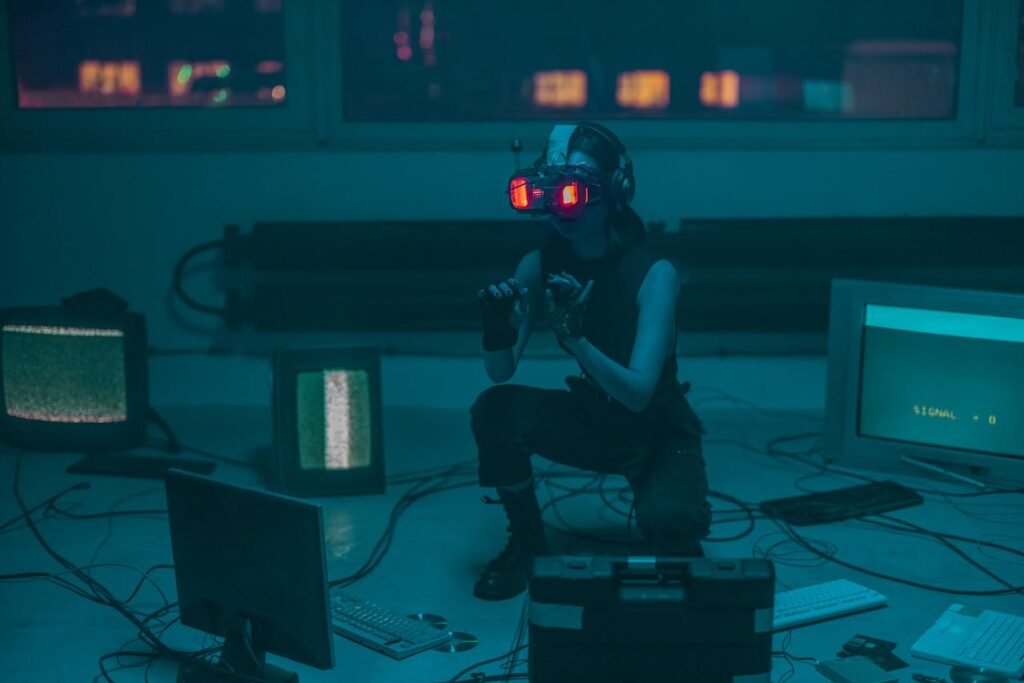
Table of Contents
AI started as a science fiction dream but is now a real-world powerhouse driving everything from Siri’s snappy comebacks to Tesla’s self-driving cars. And in recent years, it’s made a massive leap into video production. Whether it’s helping Hollywood churn out blockbusters or allowing small creators to produce jaw-dropping content, AI has become the secret sauce that elevates video creation.
One major spotlight on this technology is Coca-Cola’s recent controversial decision to recreate its iconic 1995 “Holidays Are Coming” campaign using AI. The revamped ad took a beloved piece of nostalgia and re imagined it through artificial intelligence, sparking mixed reactions. While some viewers were wowed by the AI video, others criticized the brand for relying on technology rather than human creativity. Regardless of the debate, it’s undeniable that AI is shaping advertising in new and dramatic ways. (Watch the Coca-Cola AI ad here: Coca-Cola AI ad).
Why is this so exciting? Traditionally, video production required tons of expensive gear, an army of editors, and hours of painstaking work. AI is changing the game by automating tasks, enhancing creativity, and even generating content from scratch. Whether you’re an aspiring YouTuber or an ad agency veteran, AI video tools are making high-quality production faster, cheaper, and way cooler. Think of it as your personal production wizard—except this one doesn’t need a wand.
But how does it all work? What are the tools, techniques, and mind-blowing projects behind the AI video revolution? Let’s dive into the details and explore how this technology is shaking up the industry.
1. Automated Editing and Scene Selection: AI as Your Personal Video Editor

Editing video used to be the most tedious part of production, requiring countless hours of poring over footage to find the perfect scenes. But now, AI has swooped in like a digital superhero to handle the grunt work. With tools like Descript, CapCut, and plugins like Autocut for Adobe Premiere, AI automates repetitive editing tasks and helps you focus on the fun, creative side of storytelling.
How It Works
AI-powered editors analyze your footage to detect the most engaging scenes, removing dead space, stutters, or unnecessary repetition. Tools like Descript even allow you to edit video as if you’re editing a Word document. Highlight a section of dialogue, delete the words, and watch as the corresponding video clips get trimmed automatically—yes, it’s that smart.
CapCut, a free video editor popular among TikTok creators, uses AI to detect highlights in your footage and instantly create shareable, polished videos with transitions and effects. It’s ideal for fast-paced social media content where every second counts. Meanwhile, Autocut, an AI plugin for Adobe Premiere, analyzes your raw footage and trims it down to the best takes, saving editors hours of manual labor.
Real-World Example
A prime example of AI-powered editing is the use of Opus Clip, an AI-driven tool designed for content repurposing. Imagine you’re a YouTuber with a 30-minute video, but you need to post engaging clips on Instagram. Opus Clip uses AI to identify the most shareable, high-impact moments and generates multiple short-form edits complete with subtitles and transitions. Users have reported cutting their editing time by up to 70%, letting them focus on creating more content.
For the AI futurists, there’s Runway AI, a generative tool that takes things a step further. While not a traditional editor, Runway creates and edits video scenes using AI, blending raw footage and effects seamlessly. It’s like having a virtual assistant who can create assets and put them into your timeline.
Why It Matters
The magic of AI editing isn’t just about saving time—it’s about opening doors. With tools like these, small creators and beginners can produce content that rivals professional-quality work. AI doesn’t just level the playing field; it redefines what’s possible in video production.
2. Motion Tracking and Stabilization: How AI is Redefining Smooth Footage

Let’s face it—shaky footage is the bane of any video creator’s existence. Whether you’re filming a travel vlog, a wedding dance, or a cinematic masterpiece, those unwanted jitters can ruin the whole vibe. Thankfully, modern motion stabilization has come a long way, and AI is now steering the ship, ensuring your videos look steady and polished.
The Old-School Fixes vs. AI Evolution
Before AI stepped in, stabilization relied heavily on gyroscopic sensors and optical image stabilization (OIS) built into cameras. These were great for reducing small shakes, but they struggled with larger movements, like a bumpy car ride or a fast-paced action scene. Tripods and handheld gimbals became standard tools, but they weren’t always practical or affordable.
Today, AI has reshaped stabilization and motion tracking by doing what hardware alone couldn’t. Modern cameras and smartphones use AI algorithms to predict motion and compensate for it in real-time. Instead of reacting to every shake, AI anticipates where the motion is going, keeping the footage smooth. This is particularly noticeable in devices like the iPhone 15 Pro and Google Pixel 8, where AI-driven computational stabilization ensures that even handheld or high-speed shots look like they were shot on a professional rig.
The Smartphone Revolution
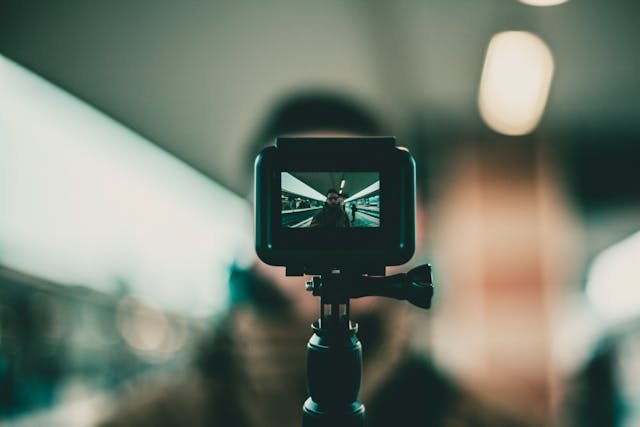
Take the GoPro Hero 12, for example. It features HyperSmooth technology, an AI-enhanced system that analyzes motion data from the camera’s sensors. The result? Action-packed footage, whether you’re snowboarding or skydiving, looks like it was filmed on rails. Similarly, smartphones like the Samsung Galaxy S23 Ultra now combine optical stabilization with AI to deliver rock-steady results even in challenging conditions, like filming at night or during rapid panning.
Post-Production Magic
AI isn’t just limited to in-camera stabilization. In post-production, tools like DaVinci Resolve’s Stabilizer analyze footage frame-by-frame, identify the source of the shake, and reframe the video to maintain a smooth path. What sets AI apart here is its ability to intelligently preserve important details, ensuring the final output doesn’t look artificially warped or cropped.
AI stabilization is more than just smoother video. It’s smarter, faster, and more accessible. By integrating AI into cameras, smartphones, and software, creators at every level can achieve professional-grade results without extra gear. Whether you’re running alongside a marathoner or panning across a sunset with shaky hands, AI ensures your story comes across as smoothly as you envisioned.
3. Content Creation and Enhancement: AI Powers Creativity Everywhere
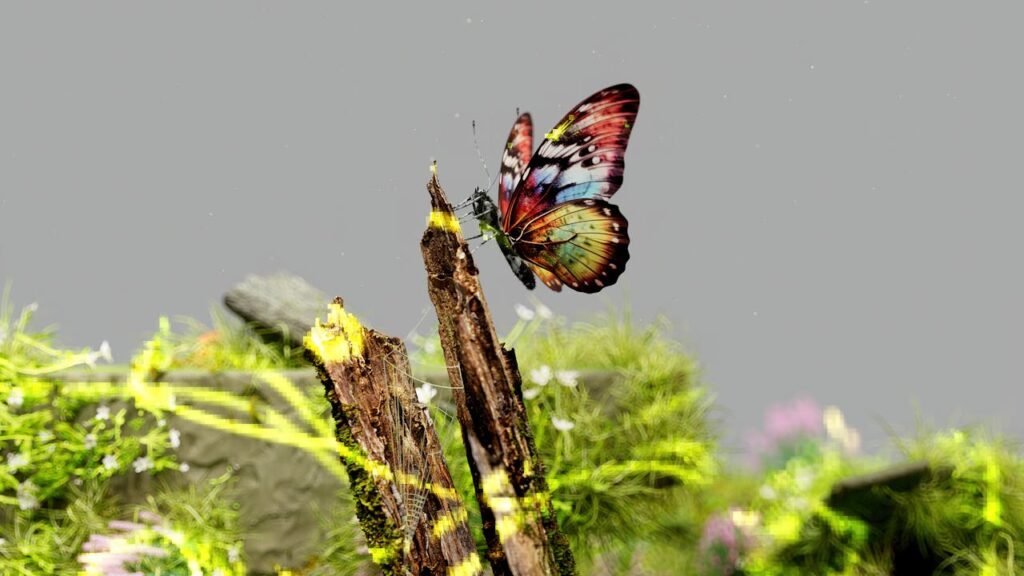
Creating compelling video content used to feel like climbing a mountain—you needed a great idea, the right footage, polished editing, and hours to pull it all together. But with AI now in the mix, the game has changed. From brainstorming concepts to polishing final edits, AI is becoming the secret ingredient for content creators at every level.
Not Just Big Brands: Social Media Creators Are All In
Let’s take a quick reminder of Coca-Cola’s recent use of AI in their ad campaign—it showed how AI can reimagine classics and bring big ideas to life. But here’s the thing: it’s not just global brands taking advantage of AI. Social media creators, influencers, and small businesses are leveraging AI to create jaw-dropping content every day.
Platforms like Opus Clip are game-changers for creators repurposing long-form content into social-friendly snippets. Imagine you’ve recorded a 30-minute podcast or vlog, but you want to break it into bite-sized highlights for TikTok or Instagram. Opus Clip uses AI to analyze your video, identify the most engaging parts, and generate multiple short clips complete with subtitles, effects, and transitions. It’s quick, efficient, and perfect for busy creators looking to maximize their content reach.
From Ideas to Scripts: The Role of AI Writing Tools
AI doesn’t just help with video editing—it starts before the camera even rolls. Tools like ChatGPT and Jasper AI are being used to brainstorm content ideas, outline scripts, and even write captions or descriptions. Need a catchy opening line for your Instagram Reel or YouTube video? AI’s got you covered. Creators no longer have to stare at a blank page for hours because AI can help jumpstart their creativity.
Recording and Editing Made Simple
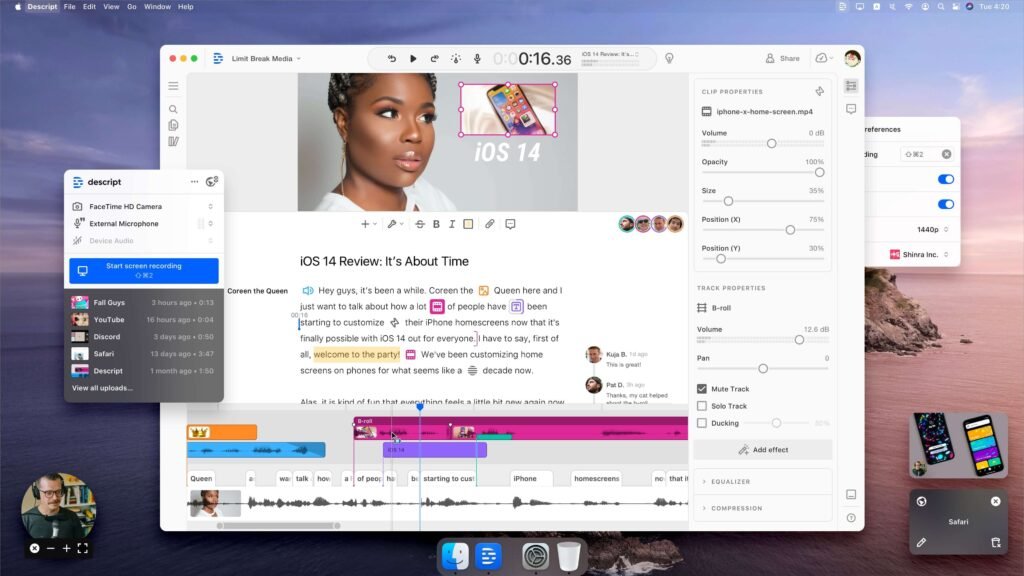
Once the content is planned, AI tools step in to make recording and editing a breeze. For example, Descript lets you record video or audio and edit it as easily as editing a Word document. Made a mistake while recording? No need to redo the whole take. Simply delete the unwanted text in the transcription, and Descript seamlessly removes it from the video or audio.
Another standout for on-the-go editing is CapCut, a favorite among TikTok creators. With AI-driven features like auto-captioning, scene detection, and quick transitions, it helps creators churn out professional-looking content in minutes. And for creators who need stunning visuals, AI image generators like DALL·E or Runway AI allow for the creation of dynamic backgrounds or design elements that bring videos to life.
AI’s power isn’t just in making things faster—it’s in expanding what’s possible. A single creator with access to tools like Opus Clip, Descript, or ChatGPT can produce content that rivals entire production teams. Need a polished clip for TikTok? Done. Want an engaging script for YouTube? Easy. The best part? These tools are increasingly accessible, ensuring creators at every level can harness the power of AI.
By connecting the dots from ideas to editing, AI is turning solo creators into full-fledged production studios. Whether you’re building your brand, engaging your audience, or just having fun online, AI is proving that the next wave of creativity is only a click away.
4. Smarter Cameras, Smarter Content: AI Revolutionizing Filming Devices
It’s no secret that cameras and smartphones are getting smarter, but AI is taking it to the next level. From predicting how to handle tricky lighting to enhancing focus on the fly, today’s devices are essentially part camera, part genius-level assistant. Filmmakers and everyday creators alike are tapping into these AI-driven features to capture better footage without needing a degree in cinematography.
AI Behind the Lens: The Invisible Cinematographer
Gone are the days when capturing great footage meant manually tweaking settings for hours. Modern devices like the iPhone 15 Pro and Google Pixel 8 Pro are powered by AI that optimizes every aspect of your shot. For instance, when shooting in challenging environments—say, under harsh sunlight or dim candlelight—AI steps in to adjust brightness, contrast, and color balance instantly. The result? Photos and videos that look like you had a professional lighting crew on hand.
AI even helps with focus tracking. Cameras can now detect faces, animals, or objects and keep them in perfect focus as they move. This isn’t just great for pet videos—it’s a game-changer for action-packed sports footage or dynamic events like weddings. Devices like the Sony Alpha 7R V use AI-powered autofocus to track subjects with jaw-dropping accuracy, even in chaotic scenes.
The Smartphone Edge: A Pocketful of AI Magic
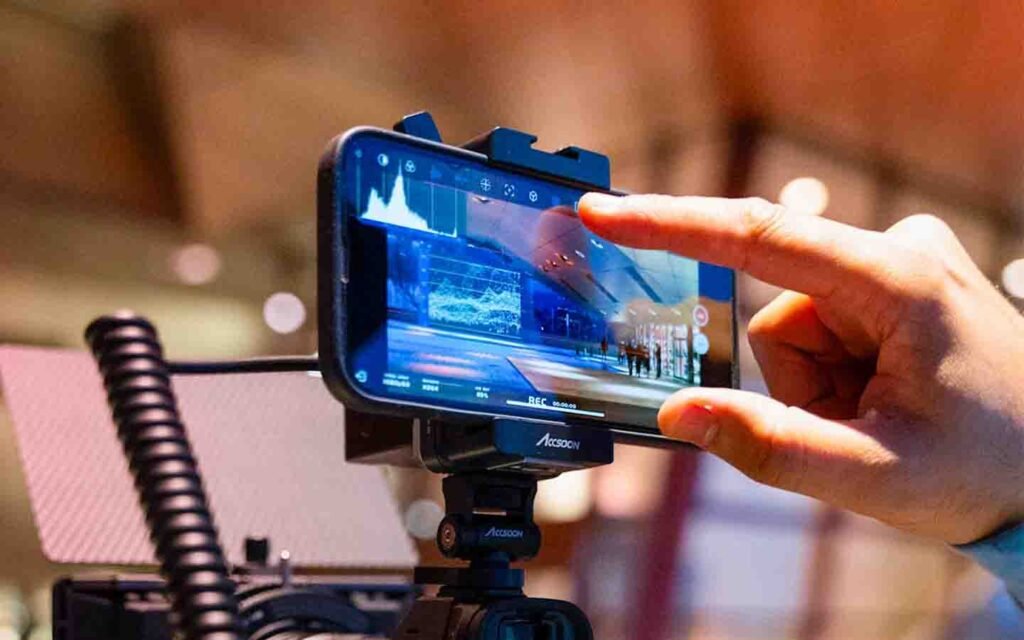
Smartphones have become pocket-sized studios, and AI is a big reason why. Take Samsung’s Galaxy S23 Ultra, which uses AI for Adaptive VDIS (Video Digital Image Stabilization). This system not only smooths out shaky hands but predicts movement to keep the frame steady—even if you’re running or riding a bike. AI’s predictive power turns amateur footage into professional-grade material, all without bulky gear.
Even entry-level smartphones are stepping up their AI game. Mid-range devices like the OnePlus Nord 3 now feature real-time HDR (High Dynamic Range) powered by AI. This ensures vibrant colors and balanced lighting in your videos, whether you’re filming at golden hour or inside a dimly lit café.
Cameras That Think for You
Professional cameras are embracing AI, too. The Canon EOS R3, for example, offers Eye Control AF, an AI-driven autofocus system that lets the camera track wherever the photographer looks. Meanwhile, the DJI Ronin 4D combines AI stabilization and focus systems to give filmmakers Hollywood-quality smoothness on the go.
For content creators using drones, AI has completely changed the game. Devices like the DJI Air 3 use AI to plan flight paths, track subjects, and avoid obstacles. This means even first-time drone operators can capture stunning aerial footage with ease.
Beyond Hardware: AI + Software = Perfect Match
AI doesn’t stop at hardware. Software enhancements like Adobe Premiere Pro’s Auto Reframe use AI to reformat footage for different platforms. Filmed something horizontal but need a vertical version for Instagram Reels? AI crops and adjusts the frame to keep the action centered, saving you hours of manual editing.
Why It Matters: The Democratization of Great Footage
AI in cameras and smartphones isn’t just about cool features—it’s about leveling the playing field. You no longer need a $10,000 rig to get cinematic results. Whether you’re shooting a short film, creating social media content, or documenting your travels, AI ensures that your footage looks its best, every single time.
By taking the guesswork out of filming, AI is helping creators focus on what really matters: telling amazing stories. And with smarter devices rolling out every year, the line between professional and everyday videography is quickly disappearing.
5. Lights, Camera, Algorithms: AI-Enhanced Lighting and Color Grading
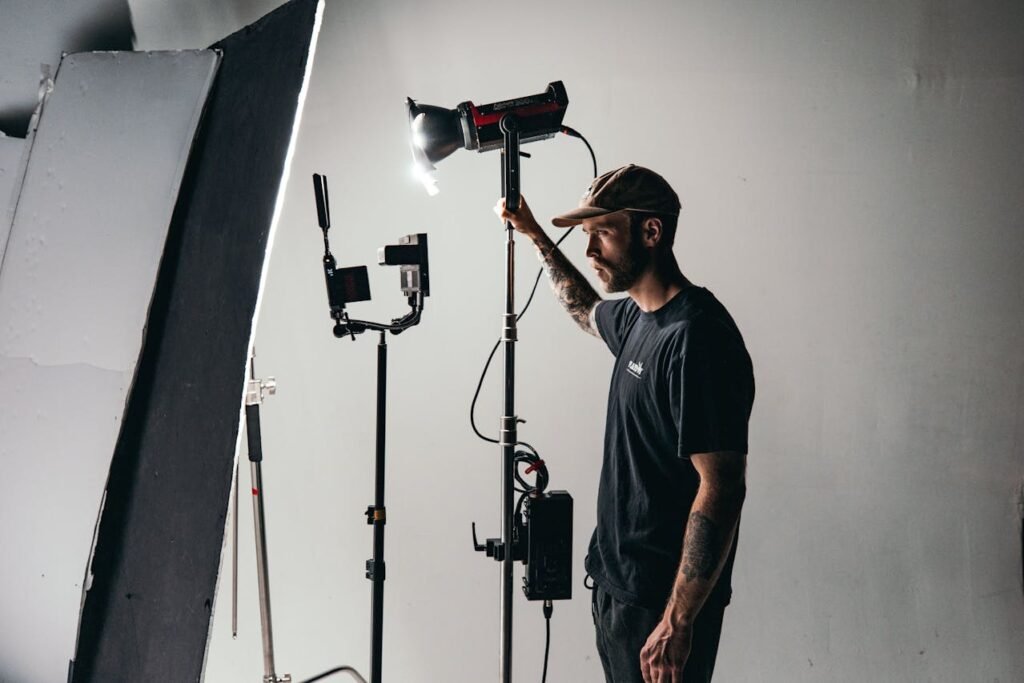
Getting the perfect lighting in a video has always been a challenge. Natural light doesn’t play nice, studio lights cost a fortune, and sometimes the footage just looks… off. Enter AI, the ultimate lighting assistant, making professional-quality visuals accessible to anyone with a camera and an internet connection.
AI as Your Virtual Lighting Crew
AI is revolutionizing how creators manage lighting, both during filming and in post-production. Cameras and smartphones now come equipped with AI-driven computational photography that automatically adjusts lighting conditions in real time. Take the iPhone 15 Pro or the Google Pixel 8, for instance. These devices use AI to analyze the scene, balancing shadows and highlights for a perfectly exposed shot—even in tricky environments like dim rooms or backlit landscapes.
On the post-production side, tools like DaVinci Resolve are changing the game for color grading. Its AI-based Color Match feature scans a frame and suggests corrections, helping creators achieve cinematic tones without needing an expensive monitor or years of grading experience. The AI doesn’t just adjust colors; it analyzes the mood and aesthetic of your footage to create a cohesive visual narrative.
AI in Color Matching: Consistency Is Key
Imagine filming a product demo across multiple days and lighting setups. Without consistent color grading, your video might look like it was stitched together by a time traveler. AI tools like Adobe Premiere Pro’s Lumetri Color and FCPX Color Finale simplify this process. They use machine learning to match color tones across clips, ensuring your video looks polished and professional.
For creators on tighter budgets, apps like CapCut also provide AI-enhanced color grading for quick and effective results. Whether it’s adding vibrancy to dull footage or softening harsh contrasts, AI tools ensure you never lose the visual appeal of your content.
Real-Life Impact: From Blockbusters to TikTok
AI-driven lighting and color grading tools aren’t just for Hollywood. In the indie film Nine Days (2021), DaVinci Resolve’s AI-powered grading helped achieve the movie’s ethereal, dream-like quality. Meanwhile, TikTok creators rely on AI tools like Lightroom Mobile to enhance their video aesthetics, ensuring their Reels and Stories pop on every screen.
Why AI in Lighting and Color Matters
AI-enhanced lighting and color grading bridge the gap between amateur and professional. It’s not just about making things easier; it’s about making your content stand out. Whether you’re a filmmaker crafting a moody thriller or a small business shooting a product ad, AI ensures your visuals are vibrant, consistent, and engaging.
By automating complex tasks and enhancing creativity, AI has transformed how we think about lighting and color in video production. No expensive rigs, no endless tweaks—just professional-grade results with a few clicks.
6. Hear Me Out: AI Elevating Sound in Video Production
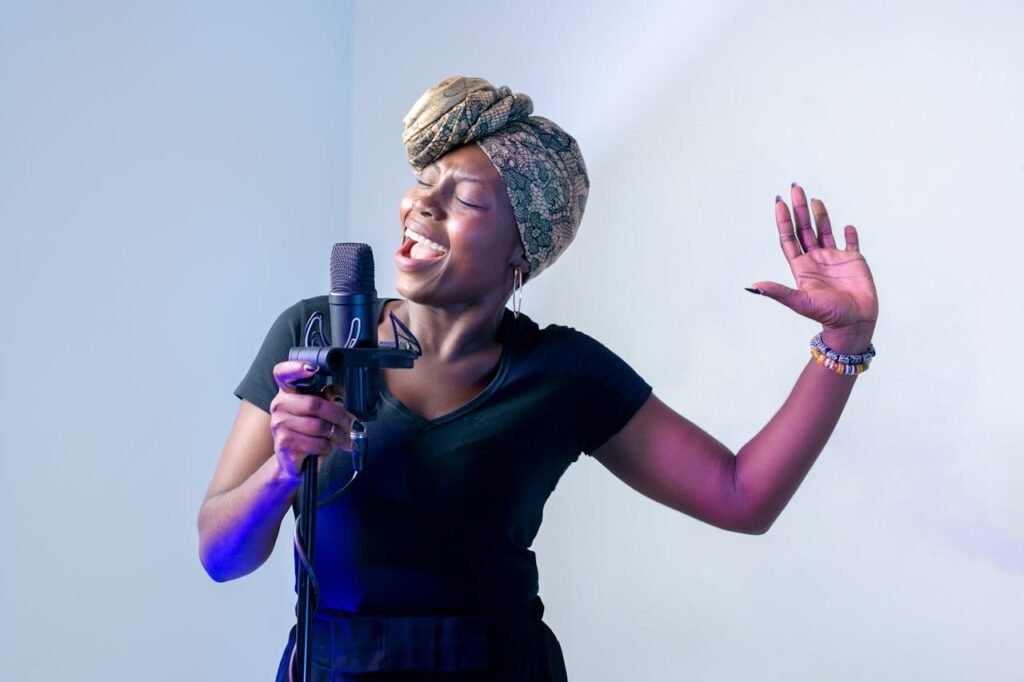
If you’ve ever watched a video with poor audio, you know how quickly it can ruin the experience. Crisp visuals don’t mean much if the sound is muffled, full of background noise, or just plain off. Thankfully, AI is stepping in to rescue audio and ensure your videos sound as good as they look.
The Problem with Audio (And How AI Fixes It)
Audio has always been a tricky part of video production. From unwanted wind noise in outdoor recordings to inconsistent levels in dialogue, sound editing traditionally required specialized skills and hours of fine-tuning. Now, AI-powered tools like Adobe Podcast Enhance, Krisp, and Auphonic make this process faster and smarter.
Take Adobe Podcast Enhance, for instance. It uses AI to isolate voices from background noise, boosting clarity and making dialogue sound studio-quality—even if it was recorded in a noisy café. Similarly, Krisp is a lifesaver for creators working from home. Its AI noise cancellation can mute barking dogs, keyboard clicks, or traffic sounds during a video call or live recording. These tools don’t just clean up sound; they make it shine.
Automating Dialogue Sync and Mixing
AI is also solving one of the most tedious tasks in video production: syncing dialogue with video. Tools like DaVinci Resolve’s Fairlight and Descript analyze audio waveforms to automatically match voice recordings to lip movements. This feature is a huge time-saver for vloggers, filmmakers, and podcasters who regularly work with overdubs or voiceovers.
For sound mixing, AI tools like Auphonic automatically adjust levels, balance music and dialogue, and compress audio to professional standards. Need to ensure your voice isn’t drowned out by background music? Auphonic handles it with ease, creating a polished sound mix that’s ready for any platform.
Voice Cloning and Sound Design: The AI Edge
AI doesn’t just enhance existing audio—it creates entirely new possibilities. Voice cloning tools like ElevenLabs allow creators to generate realistic voiceovers without ever stepping into a recording booth. Need to revise a line in your video but can’t get the voice actor back? AI can clone their voice, letting you tweak dialogue seamlessly.
In sound design, AI is helping filmmakers create immersive audio experiences. Tools like Boom Library’s SoundWeaver use AI to layer sound effects, generating complex audio environments for action scenes, fantasy worlds, or even subtle background ambiance. It’s like having a Hollywood sound engineer in your laptop.
Real-Life Application: The YouTube and TikTok Revolution
Audio enhancement isn’t just for big-budget productions. TikTok creators regularly use tools like CapCut for auto-captions and audio cleanup, ensuring their content is both accessible and engaging. On YouTube, creators rely on tools like Auphonic to maintain professional sound quality in tutorials, unboxings, or interviews.
The Sound of Success
In a world where so many people consume video content on mobile devices, audio quality is more important than ever. AI tools ensure your sound is clear, balanced, and professional, regardless of your setup. Whether you’re creating a podcast, shooting a short film, or posting a TikTok, AI removes the technical barriers to great audio.
Good audio can elevate your content from average to exceptional, and AI makes achieving it easier than ever. So next time you’re filming, remember: visuals grab attention, but sound keeps people watching.
7. Eye in the Sky: AI in Drone Videography

Capturing cinematic aerial footage once required a hefty budget and a helicopter. Today, drones equipped with AI have made this process more accessible, enabling stunning visuals with minimal effort. AI is now a key player in turning drone videography into a user-friendly experience, blending creativity with automation.
AI Takes Control: Smarter Drone Navigation
Modern drones, like the DJI Air 3, leverage AI to revolutionize how creators capture aerial shots. Features like ActiveTrack allow drones to follow moving subjects automatically. Whether it’s a hiker on a mountain trail or a skateboarder in a park, AI predicts movements and adjusts camera angles for smooth, cinematic footage.
AI also enhances flight safety by enabling obstacle detection and avoidance. Drones now navigate complex environments—trees, powerlines, or buildings—without manual intervention. For beginners, this means fewer crashes and more confidence.
Cinematic Creativity Made Simple
AI simplifies complex maneuvers with features like QuickShots, which offer pre-programmed flight paths. Need a dramatic zoom-out to reveal a landscape or a sweeping orbit around a subject? These intelligent flight patterns make anyone look like a seasoned filmmaker.
Advanced drones like the Parrot Anafi AI even integrate 3D mapping, helping users plan intricate shots with precision. This tech has found use in industries like real estate and environmental documentation, proving its versatility beyond entertainment.
Reaching New Heights with AI
AI in drones isn’t just about convenience—it’s unlocking possibilities. Creators can now achieve professional-quality results with minimal effort, capturing footage that inspires, excites, and amazes. Whether for cinematic films, travel vlogs, or real estate showcases, AI-powered drones prove that the sky is no longer the limit—it’s your creative canvas.
8. Tailored to Perfection: AI in Personalized and Interactive Video Content
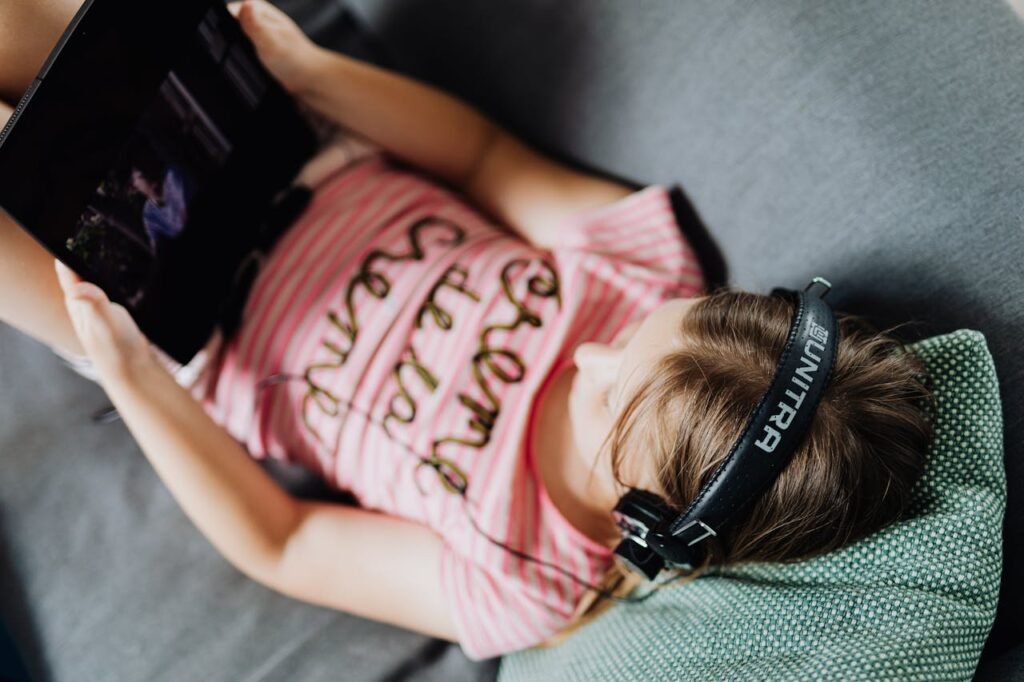
In a world where attention spans are shorter than a TikTok clip, personalized video content is becoming the gold standard for engagement. AI is leading this charge, enabling creators and brands to produce videos that speak directly to individuals or adapt based on viewer input. It’s like having a conversation instead of just watching a screen.
Personalization Meets Video Magic
Have you ever received a video email with your name seamlessly embedded into the visuals or dialogue? That’s AI at work. Tools like Vidyard and Hyperise use AI to generate personalized video content tailored to individual viewers. For example, a real estate agent can send a video showcasing properties with the recipient’s name on the mailbox or street signs. It’s attention-grabbing, memorable, and, most importantly, effective.
On social media, AI is transforming how brands connect with audiences. Platforms like Synthesia allow businesses to create AI-generated spokespeople who can address customers by name, explain products, or even answer FAQs in real time. These synthetic personalities are already being used in industries ranging from education to customer service, creating highly engaging experiences.
Interactive Videos: Choose Your Adventure
Interactive video content is another area where AI is making waves. Remember those “choose your own adventure” books? AI brings that concept to life on screen. Tools like Adventr enable creators to design videos where viewers can make choices that alter the storyline. Want to decide whether the protagonist takes the scenic route or the shortcut? Click, and the narrative adjusts instantly.
Real-World Applications: Personalized Connection Wins
Companies are already leveraging personalized and interactive video to boost engagement. For instance, Netflix uses AI to tailor thumbnails and trailers based on what you’ve previously watched. Ever wondered why your friend sees a totally different cover for the same show? That’s AI optimizing what’s most likely to catch your attention.
On a smaller scale, YouTube creators are using tools like Opus Clip to craft personalized clips for their audience segments. By understanding what different viewers like—whether it’s humor, tutorials, or drama—creators can deliver content that resonates with each fan base.
Videos That Speak Your Language (Literally and Figuratively)
AI-driven personalization and interactivity are turning video into a two-way experience, breaking the old mold of passive watching. Whether it’s a custom message, an interactive product demo, or a narrative that adapts based on choices, this is the future of engagement.
With AI, video becomes a conversation, and everyone leaves feeling like it was made just for them.
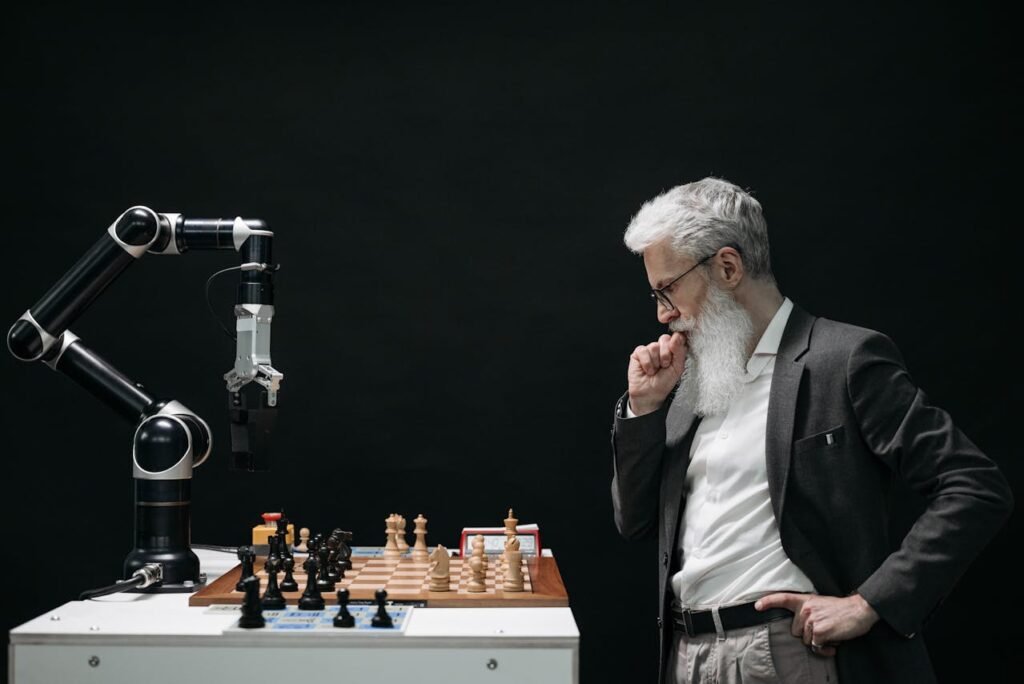
Lights, Algorithms, Action: The Future of AI in Video Production
In conclusion, as we reach the final act of AI’s role in video production, it’s clear that this technology isn’t just a tool—it’s an evolution. From automating tedious tasks to opening new creative possibilities, AI has already changed the game. But what’s next? Let’s look ahead at how AI continues to push boundaries in video production.
Real-Time Video Generation: Faster Than Ever
AI is making real-time video creation a reality. Tools like Runway AI and Kaiber are enabling creators to generate scenes on the fly, perfect for live streaming or interactive storytelling. Imagine a video game where the scenery adapts to your choices, or a live event with dynamic visuals changing in real-time. AI-powered engines are driving this forward, blending live video with CGI seamlessly.
Platforms like Twitch are already experimenting with AI-enhanced streams where overlays, transitions, and effects adjust based on audience engagement. This creates a participatory experience that feels unique every time.
The Rise of AI Virtual Actors
Virtual actors are becoming more than sci-fi dreams. Companies like Synthesia and DeepBrain AI are creating hyper-realistic AI avatars capable of delivering lines, hosting shows, or even acting in films. These avatars are lifelike, multilingual, and tireless—perfect for global marketing campaigns or digital hosts.
Collaboration Between AI and Humans
While AI is advancing rapidly, it’s not here to replace human creativity—it’s here to enhance it. Future workflows will likely feature deeper collaboration between humans and AI. Directors and editors will work alongside AI tools to brainstorm ideas, refine edits, and push creative boundaries.
For instance, Generative AI could assist filmmakers in visualizing scenes before production even starts, creating virtual storyboards or animatics. This technology will empower creators to experiment with ideas without committing significant resources upfront.
Ethics and Creativity in the AI Age
As AI continues to grow, questions about its ethical use are becoming louder. How do we ensure fair credit for creators whose work AI learns from? How do we prevent deepfakes and misuse of AI-generated content? While the technology is exciting, creators and industries must work together to create guidelines and ensure AI remains a tool for good
Tomorrow’s Videos, Today
The future of AI in video production isn’t just bright—it’s limitless. From interactive live streams to virtual actors, AI is reshaping how stories are told and experienced. Whether you’re a small creator or a big studio, the possibilities are growing every day.
With AI, the only limit is our imagination. The tools are here, the stage is set—now it’s time to create something extraordinary.
Extra Resources:
Part 1: Automated Editing and Scene Selection
- Descript: AI-powered editing that allows for text-based edits.
Descript Official Website. - Opus Clip: AI tool for repurposing long-form videos into social-friendly snippets.
Opus Clip Official Website. - CapCut: AI-enhanced video editing for social media creators.
CapCut Official Website. - Runway AI: Generative video editing and asset creation tool.
Runway AI Official Website.
Part 2: Motion Tracking and Stabilization
- DJI Air 3: Advanced AI features like ActiveTrack and obstacle avoidance.
DJI Air 3 Product Page. - Sony Alpha 7R V: AI autofocus for accurate subject tracking.
DpReview of Sony Alpha 7R V Overview. - CapCut Stabilization: AI for video stabilization in post-production.
CapCut Official Website.
Part 3: Content Creation and Enhancement
- Runway AI: Generating video scenes and editing with AI.
Runway AI Official Website. - Descript: Editing audio and video using text-based AI tools.
Descript Official Website. - Opus Clip: AI for creating engaging short-form content from long-form videos.
Opus Clip Official Website. - Coca-Cola AI Ad (Reminder): Reference to the reimagined Coca-Cola Holidays Are Coming campaign.
Coca-Cola AI Ad on YouTube.
Part 4: Smarter Cameras, Smarter Content
- iPhone 15 Pro: AI-driven computational photography and video stabilization.
Apple iPhone 15 Pro Product Page. - Google Pixel 8 Pro: AI capabilities like real-time HDR and photo editing.
Google Pixel 8 Pro Product Page. - DJI Ronin 4D: AI-powered stabilization for professional filmmakers.
DJI Ronin 4D Product Page. - Canon EOS R3: AI-driven Eye Control Autofocus system.
Canon EOS R3 Overview.
Part 5: AI in Lighting and Color Grading
- Adobe Premiere Pro Lumetri Color: AI-enhanced color matching and grading tools.
Adobe Premiere Pro Lumetri Color Guide. - DaVinci Resolve: AI-powered color grading and Color Match feature.
DaVinci Resolve Official Website. - CapCut: AI-driven color grading for social media creators.
CapCut Official Website.
Part 6: AI Elevating Sound in Video Production
- Adobe Podcast Enhance: AI tool for noise reduction and audio clarity.
Adobe Podcast Enhance Overview. - Krisp: AI-powered noise cancellation for clean audio.
Krisp Official Website. - Auphonic: AI audio leveling and enhancement for podcasts and videos.
Auphonic Official Website. - ElevenLabs: Voice cloning and AI-generated voiceovers.
ElevenLabs Official Website.
Part 7: AI in Drone Videography
- DJI Air 3: AI-driven tracking and obstacle avoidance for drones.
DJI Air 3 Product Page. - Parrot Anafi AI: AI-powered 3D mapping and precision planning.
Parrot Anafi AI Overview. - Litchi: Multi-drone coordination using AI for choreographed shots.
Litchi Official Website.
Part 8: AI in Personalized and Interactive Video Content
- Vidyard: Personalized video content creation using AI.
Vidyard Official Website. - Hyperise: AI-powered personalization for video marketing.
Hyperise Official Website. - Synthesia: AI-generated avatars for personalized video content.
Synthesia Official Website. - Adventr: Interactive video creation platform with AI features.
Adventr Official Website.
Conclusion: Lights, Algorithms, Action
- Runway AI: Real-time video generation and editing.
Runway AI Official Website. - Kaiber: AI-driven video creation for dynamic storytelling.
Kaiber Official Website. - Twitch: AI-enhanced live streaming experiments.
Twitch Official Website.
Thank you for joining in on this read, if you enjoyed, it, do not forget to signup to join our email list. And importantly, join us on our social media channels. If you are all about content creation and you are brand new to it, check out our post on Essential tips on getting started.

